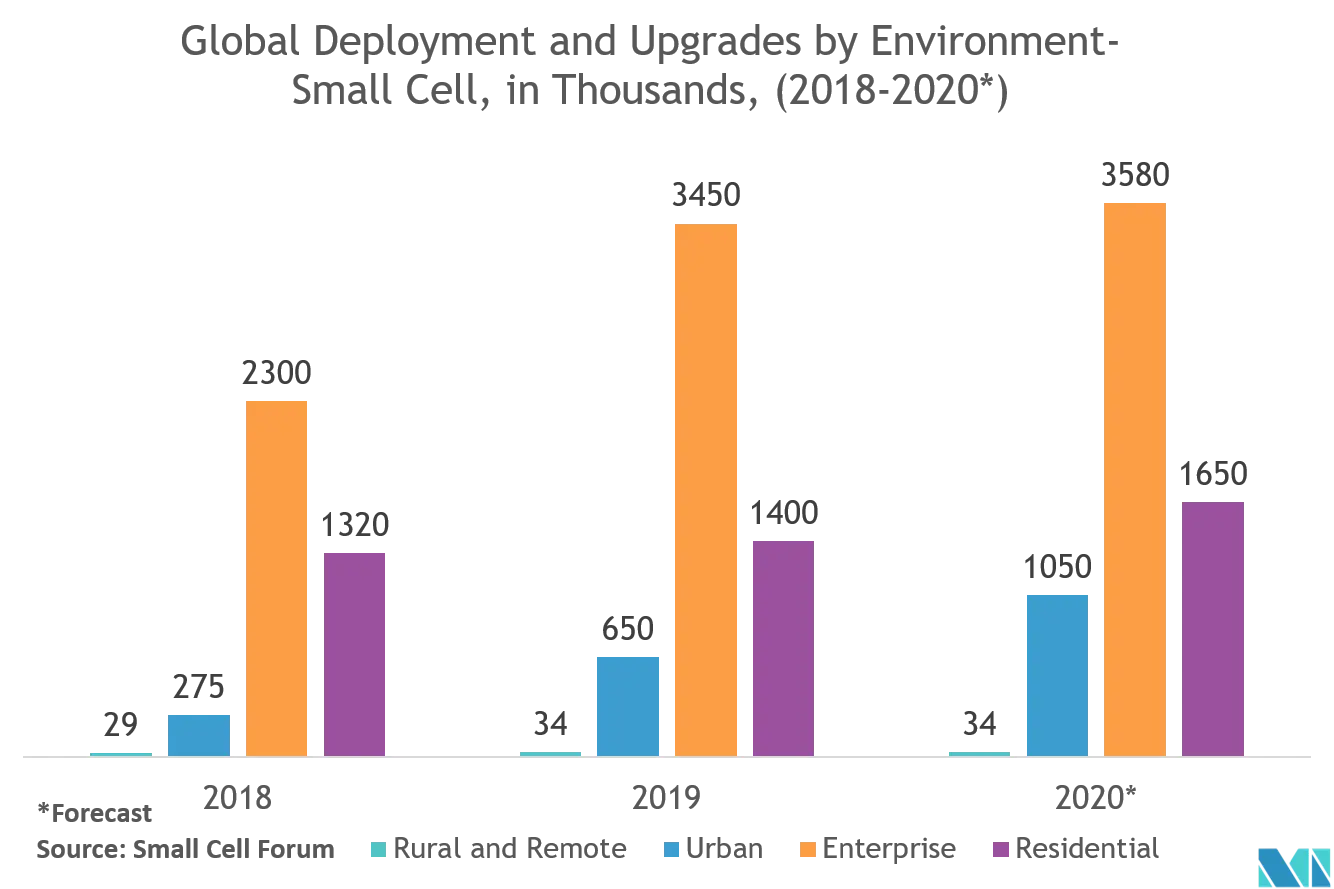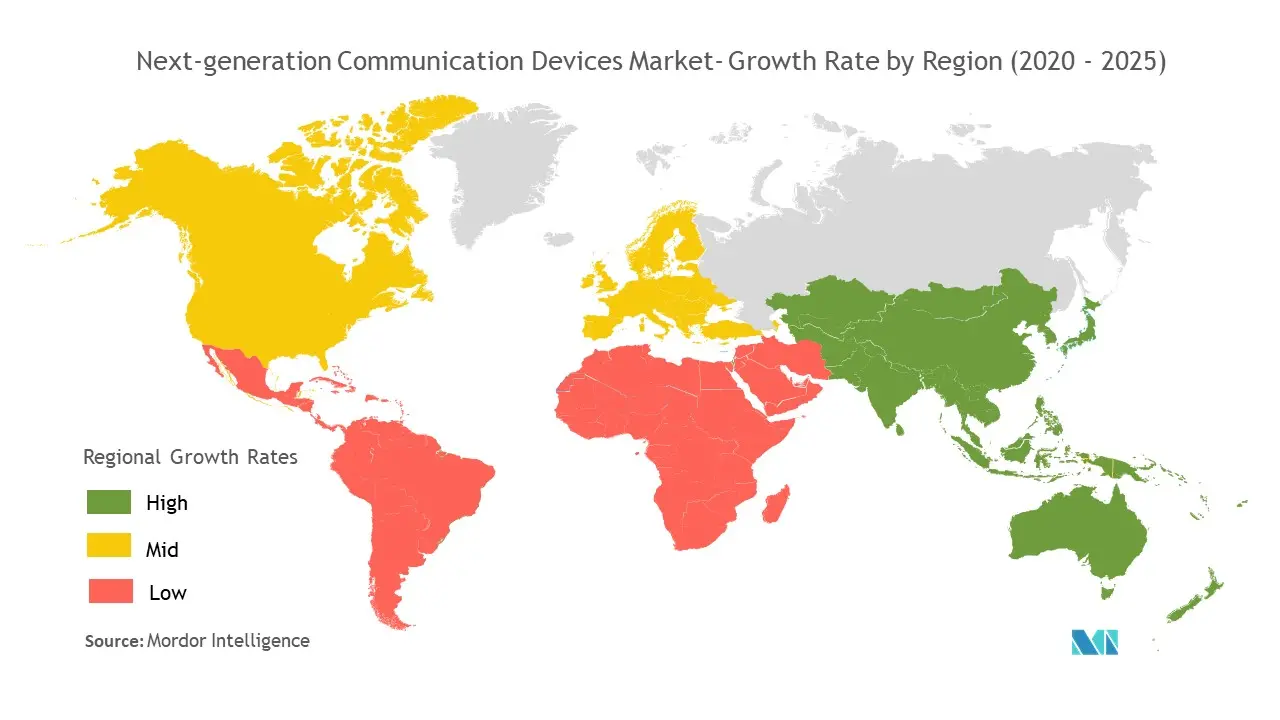Market Trends of Next-generation Communication Devices Industry
This section covers the major market trends shaping the Next-generation Communication Devices Market according to our research experts:
5G Technology is Expected to Hold a Significant Share
- The growing mobile data traffic is augmenting the market's growth positively. According to the Cisco Visual Networking Index (VNI) Global Mobile Data Traffic Forecast, Mobile data traffic is expected to witness a CAGR of 46% from 2017 to 2022, reaching 77.5 exabytes per month by 2022. Additionally, Cisco's study also states that by 2022, a 5G connection will generate 2.6 times more traffic than the average 4G connection. By the deployment of the 5G, the rising data usage will meet the efficient network quality required.
- With the increasing demand for networks, companies are creating new approaches to 5G deployments. They have the potential to make small cells more affordable and attractive for both MNOs and vertical enterprises. Additionally, NFV and SDNs are the simplified and virtualized network options providing building blocks for enhanced capabilities through function centralization.
- In today's environment, small cells are required for the applications in need of increased bandwidth as well as the increasing number of connected devices. For instance, According to Cisco Systems Inc., 500 billion devices are expected to be connected to the internet by 2030. Moreover, 5G telecom operators are focused on deploying small cell under low-frequency band for offering enhanced bandwidth services to the customer.
- Additionally, the evolution of RAN for 5G is expected to have a huge impact on wireless technologies, including enabling Mobile Edge Computing (MEC) and network slicing. These RANs of the future will also contribute to the lower latency that would make 5G powerful. Various partnerships are being witnessed in this domain. For instance, in June 2020, Ericsson announced that it was the preferred vendor for 5G by Canadian telco, Bell. Ericsson will supply kit for the Radio Access Network (RAN) of Bell's non-standalone 5G network.

North America to Account for a Major Share
- As per Ericsson, North America is expected to lead the 5G mobile technology with major operators stating their intentions to deploy 5G. By 2023, around 50% of all mobile subscriptions in the region are forecasted for 5G. The US federal government is also planning to build a centralized 5G wireless network across the country by 2021.
- With the increasing 5G network rollouts, smartphone OEMs and telecom players in the region are rapidly gearing toward the shift. Smartphone component vendors such as Qualcomm Technolgies Inc are developing 5G modem chipsets in combination with service providers. For instance, In June 2020, the company launched the new Snapdragon 690, the first 5G - enabled mobile platform in the Snapdragon 6 series
- Moreover, the surge in demand for advanced technologies, such as machine-to-machine communication, connected cars, and AI, is highest in the region as compared to others. Hence it is anticipated to offer ample opportunities for next-generation communication devices market.
- The region is also considered one of the most prominent markets for VLC technology, due to increasing R&D investments in this technology. In 2018, Space and Naval Warfare Systems Command (SPAWAR) of the United States worked with the John Hopkins University Applied Physics Laboratory to evaluate the visible light communication technology, Li-Fi.


